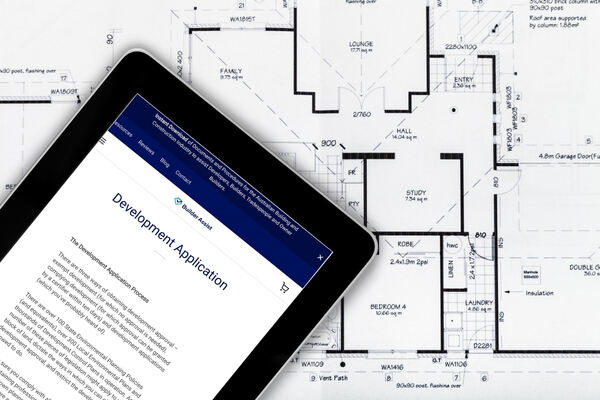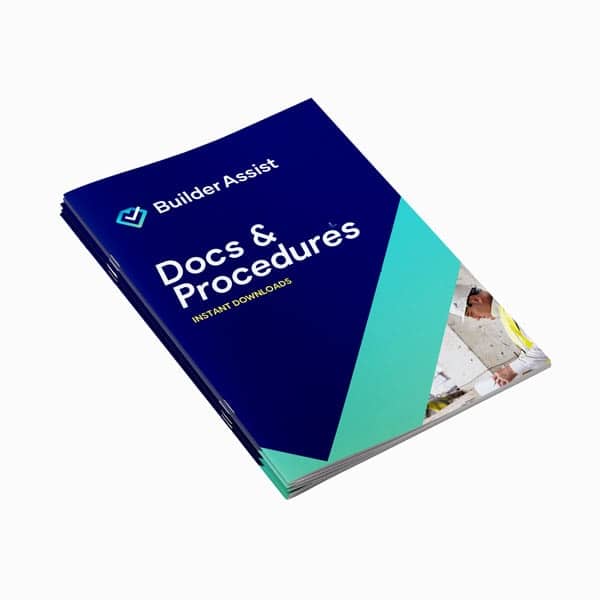
Getting a Building Permit is a key part of the construction process in Australia.
If you're a builder, here's a quick rundown on what you need to know about your responsibilities and how to get permits.
A Building Permit (also known as a Building Approval or Building Consent in some places) is an official go-ahead from local government authorities or private building surveyors. It means you can start construction or renovation work on a property. This permit ensures that your planned construction meets all the necessary building codes, standards, and local regulations. It's all about making sure everything is safe, structurally sound, and in line with zoning laws.

To obtain a Building Permit, builders must prepare detailed plans, ensure compliance with relevant codes, and submit their applications to the appropriate authorities.
What Do Builders Need to Do to Obtain a Building Permit?
Prepare Comprehensive Plans and Specifications
Builders need to create detailed construction plans that include architectural drawings, structural details, and specifications. These plans must comply with local building codes and standards. Once ready, submit this documentation to the local council or a private building surveyor.
Submit an Application
The application for a Building Permit should include all necessary documents like construction plans, engineering reports, and soil tests. There's usually a fee involved, which varies by project size and complexity. The approval process can take several weeks.
Ensure Compliance
Make sure all plans align with the Building Code of Australia (BCA) and local regulations. This step is crucial to avoid any delays or rejections.
Engage with Surveyors
Work with building surveyors, who could be private or council-appointed, to review your application. They ensure that your construction plans meet all regulatory requirements.
Receive the Permit
Once approved, you will receive the Building Permit. This must be displayed on-site during construction.
Address Feedback
If your application isn't initially approved, address any feedback or required changes highlighted by the building surveyor or council.
Who is Typically Responsible for Obtaining a Building Permit?
Builders
Builders often handle the permit application process, especially for larger or more complex projects.
Architects/Designers
Sometimes, architects or designers will submit the Building Permit application as part of their services.
Project Managers
In larger projects, project managers might oversee the permit application process to ensure everything is in order.
Building Permit vs Construction Certificate
Building Permit
A Building Permit is needed for most building works, ensuring compliance with local regulations, codes, and standards. It's usually issued by local councils or private building surveyors and includes an assessment of the construction plans.
Construction Certificate
Specific to NSW, a Construction Certificate is required after Development Consent but before starting any building work. It confirms compliance with the BCA and the conditions of Development Consent. This certificate is issued by accredited certifiers or the local council.
Key Differences
- Scope: Building Permits apply broadly across Australia, while Construction Certificates are specific to NSW.
- Issuing Authority: Building Permits are issued by local councils or private building surveyors, while Construction Certificates are issued by accredited certifiers or councils in NSW.
- Purpose: Building Permits confirm compliance with all relevant building regulations and standards. Construction Certificates confirm compliance with the BCA and Development Consent conditions.
Conclusion
To obtain a Building Permit, the process is pretty straight forward. Builders must prepare detailed plans, ensure compliance with relevant codes, and submit their applications to the appropriate authorities. While the specific requirements and processes can vary across states and territories, the fundamental principles of ensuring safety and compliance remain consistent nationwide.
Additional Resources for Builders and Developers
To assist builders and developers in managing their projects effectively and ensuring compliance with regulatory requirements, various resources are available, such as:
Construction Management Plan (CMP): A detailed plan outlining how construction activities will be managed to minimise disruption and ensure safety.
Project Management Plan (PMP): A comprehensive plan detailing the project's scope, objectives, timeline, and resources.
Confidentiality Agreement Template: Legal templates to protect sensitive information shared among parties involved in the construction project.
Traffic Management Plan: A strategy to manage traffic flow and safety around the construction site.
Waste Management Plan: Guidelines for the proper disposal and recycling of construction waste.
Excavation Management Plan: Procedures for safely conducting excavation work and managing associated risks.
See more Developer resources here.
These resources can help you, as a builder or developer, to streamline the Building Permit and Development Application process and project management. In addition, they assist with compliance with regulatory requirements and maintain high safety and quality standards throughout the construction process.



